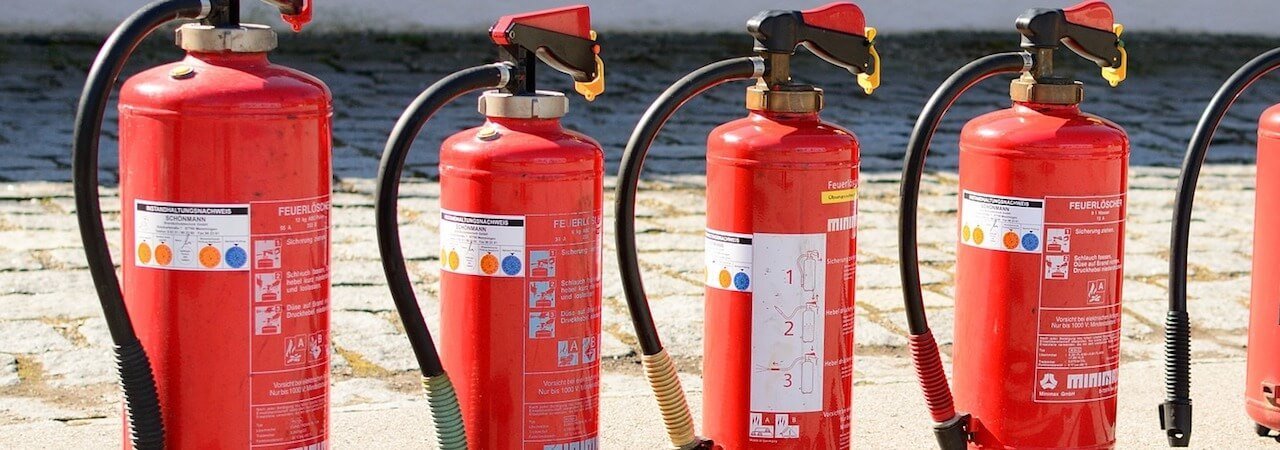Choose fire extinguishers by their size, class, and ranking. "Size" refers to the weight of the fire-fighting chemical, or charge, a fire extinguisher contains, and usually is about half the of the fireplace extinguisher itself. For common residential use, extinguishers two and a half to five pounds in size are actually adequate; these think about five to ten pounds.

"Class" refers to the types of fires an extinguisher can put out. Class A extinguishers are for use only on ordinary flammable materials here such as wood, paper, and cloth. Typically, their charge contains soft water, which is inexpensive and sufficient for the task but quite dangerous if used against oil fires (the pressurized normal water can spread the burning grease) and electrical fire (the water stream and wetted surfaces may become hot, delivering a possibly deadly shock). Class B extinguishers are for use on flammable liquids, including fat, oil, gasoline, and other chemicals. Usually their demand involves powdered sodium bicarbonate (baking soda).
Class C extinguishers are for power fires. Most contain dry ammonium phosphate. Some School C extinguishers contain halon gas, but these are no longer produced for residential use because of halon's adverse impact on the earth's ozone layer. Halon extinguishers are recommended for use around expensive electronic gear such as personal computers and televisions; the fuel blankets the fire, suffocating it, and then evaporates without leaving chemical remains that can ruin the equipment. Another good thing about halon is that it extends into hard-to-reach areas and around obstructions, quenching fire in places other extinguishers cannot touch.
Many fire extinguishers contain chemicals for putting out combo fires; actually extinguishers classed B: C and even ARC are more widely available for home use than extinguishers designed only for individual types of fires. All-purpose ARC extinguishers usually are your best option for any house location; nevertheless , B: D extinguishers create grease fire more effectively (their cost of sodium bicarbonate acts with fats and cooking oil to form a wet foam that smothers the fire) and so should be the first choice in a kitchen.
"Rating" is a measurement of any fire extinguisher's effectiveness on the given type of open fire. The greater the rating, the more effective the extinguisher is against the class of fire to which the rating is assigned. Actually, the rating system is somewhat more complicated: rating numbers assigned to a Class A extinguisher reveal the approximate gallons of water needed to match the extinguisher's capacity (for example, a 1A ranking indicates that the extinguisher functions as well as about a gallon of water), while numbers designated to Class B extinguishers indicate the approximate square footage of fireplace that can be extinguished by a typical nonprofessional user. Class D extinguishers carry no scores.
For protection on an entire floor of a house, buy a relatively large extinguisher; for example , a model rated 3A: 40B: D. These weigh about 10 pounds and cost around $50. In a kitchen, choose a 5B: Chemical unit; these weigh about three pounds and cost around $15. For increased kitchen protection, it is probably far better to buy two small extinguishers than a individual larger model. Kitchen fire usually start small and are easily handled by a little extinguisher; smaller extinguishers are more manageable than bigger ones, especially in limited spaces; and, because even a partly used extinguisher must be recharged to prepare it for even more use or replaced, having multiple small extinguishers makes better monetary sense.
A 5B: C extinguisher is also a good choice for protecting a garage, where grease and oil fires are most likely. For workshops, utility rooms, and similar locations, obtain IA: lOB: Chemical extinguishers. These, too, consider about three pounds (some weigh up to several pounds) and cost around $15. In all situations, buy only extinguishers listed by Underwriters Laboratories.
Mount fireplace extinguishers in plain look on walls near doorways or other potential escape routes. Use mounting conference made for the purpose; these attach with long anchoring screws to wall studs and allow extinguishers to be instantly removed. Instead of the plastic brackets that come with many fire extinguishers, consider the sturdier marine brackets approved by the U. S. Coast Safeguard. The correct mounting level for extinguishers is between four and five feet above the floor, but mount them as high as six feet if required to keep them out of the reach of young children. Do not keep fire extinguishers in cabinets or elsewhere out of sight; in a emergency they are likely to be overlooked.
Buy fire extinguishers that contain pressure gauges that allow you to check the condition of the charge at a look. Inspect the gauge once a month; have an extinguisher recharged where you bought it or through your local fire department whenever the gauge shows it has lost pressure or right after it has recently been used, even if only for a few seconds. Open fire extinguishers that cannot be recharged and have outlasted their rated life span, which is printed on the brand, must be replaced. Inside no case should you keep a fire extinguisher longer than ten years, regardless of the manufacturer's claims. Unfortunately, recharging a smaller extinguisher often costs almost around replacing it and might not exactly restore the extinguisher in condition. Wasteful as it seems, it is usually better to replace most residential fire extinguishers rather than have them recharged. To do this, discharge the extinguisher (the contents are nontoxic) into a paper or plastic bag, and then discard both the bag and the extinguisher in the trash. Aluminum extinguisher cylinders can be recycled.
No comments:
Post a Comment